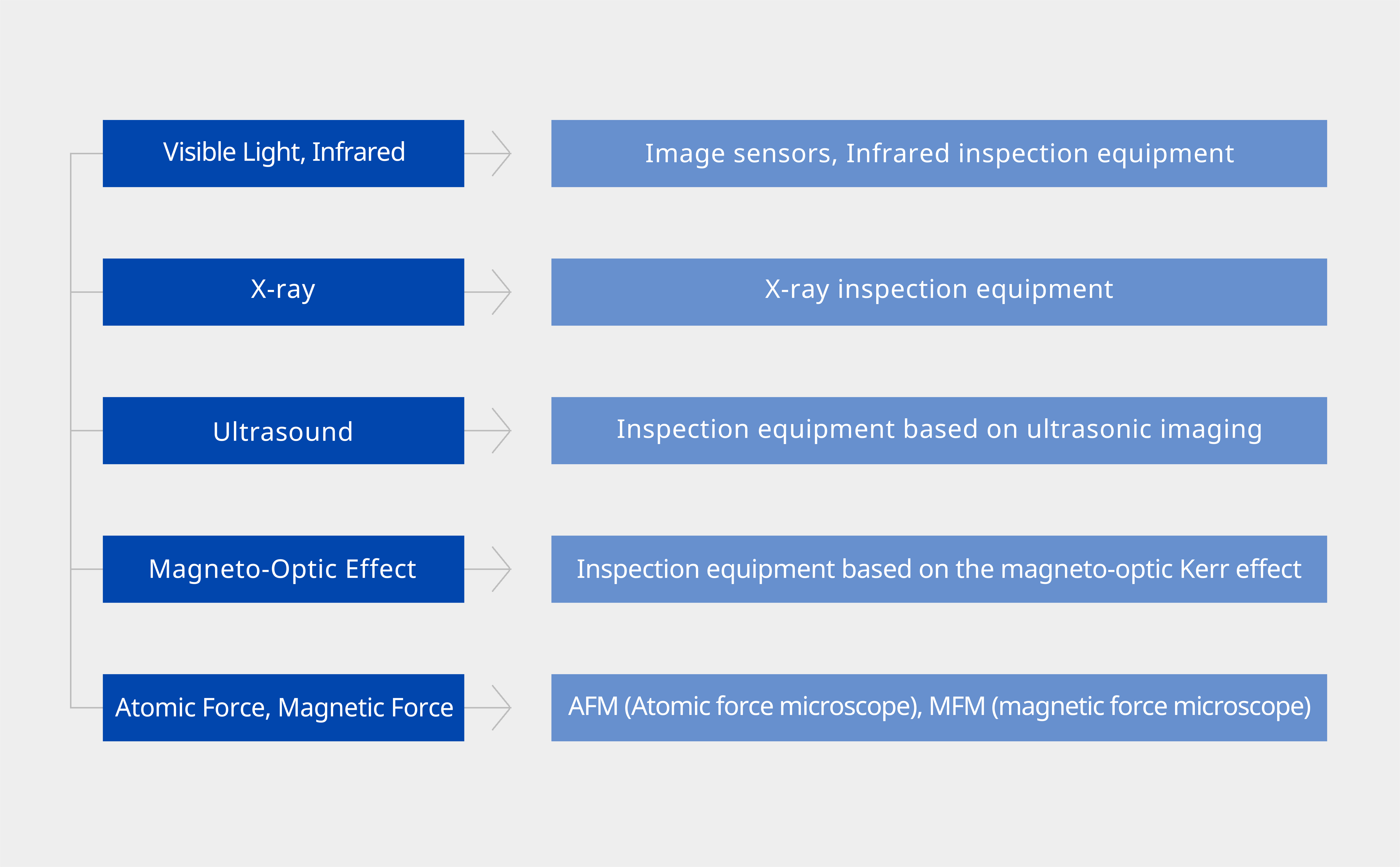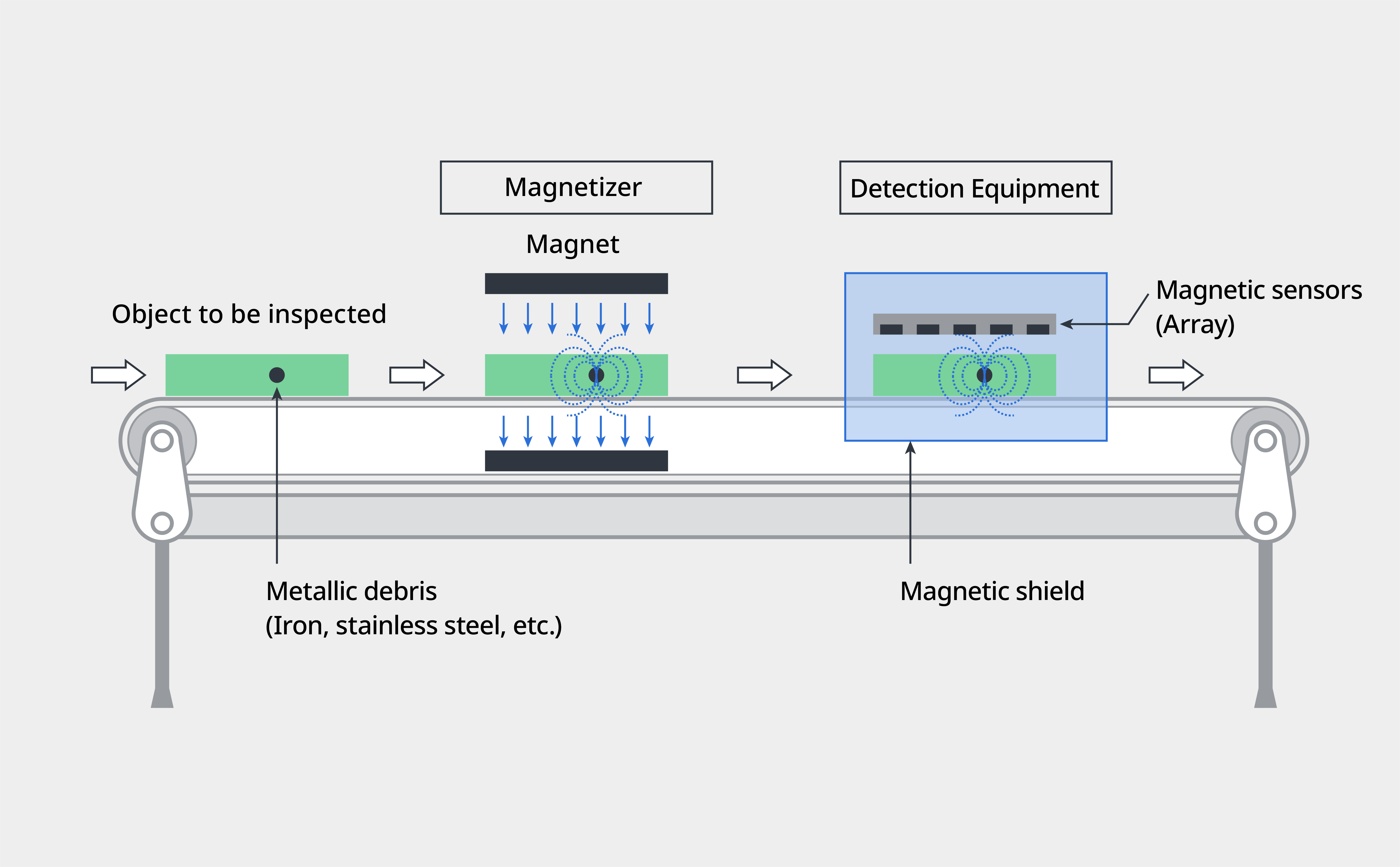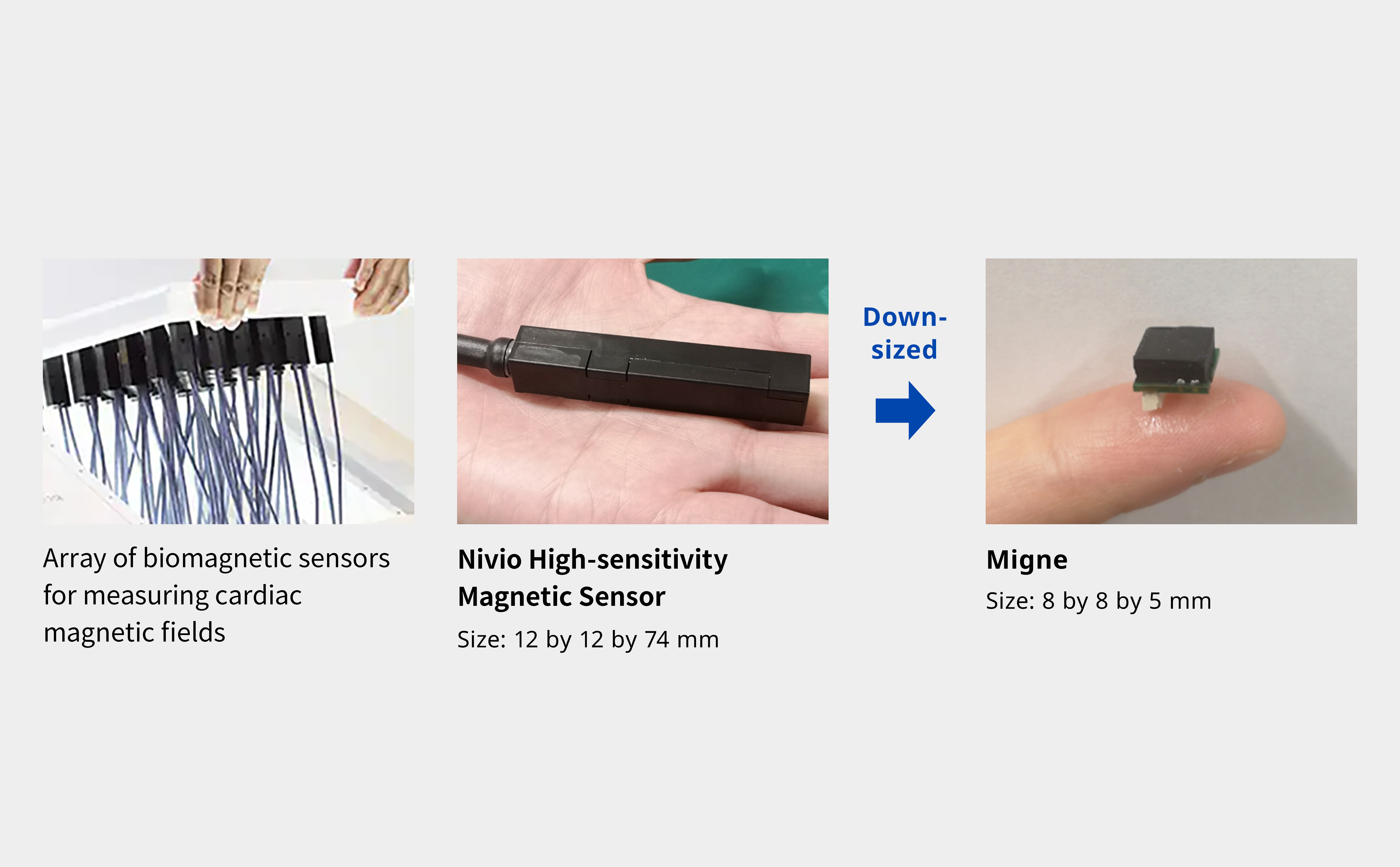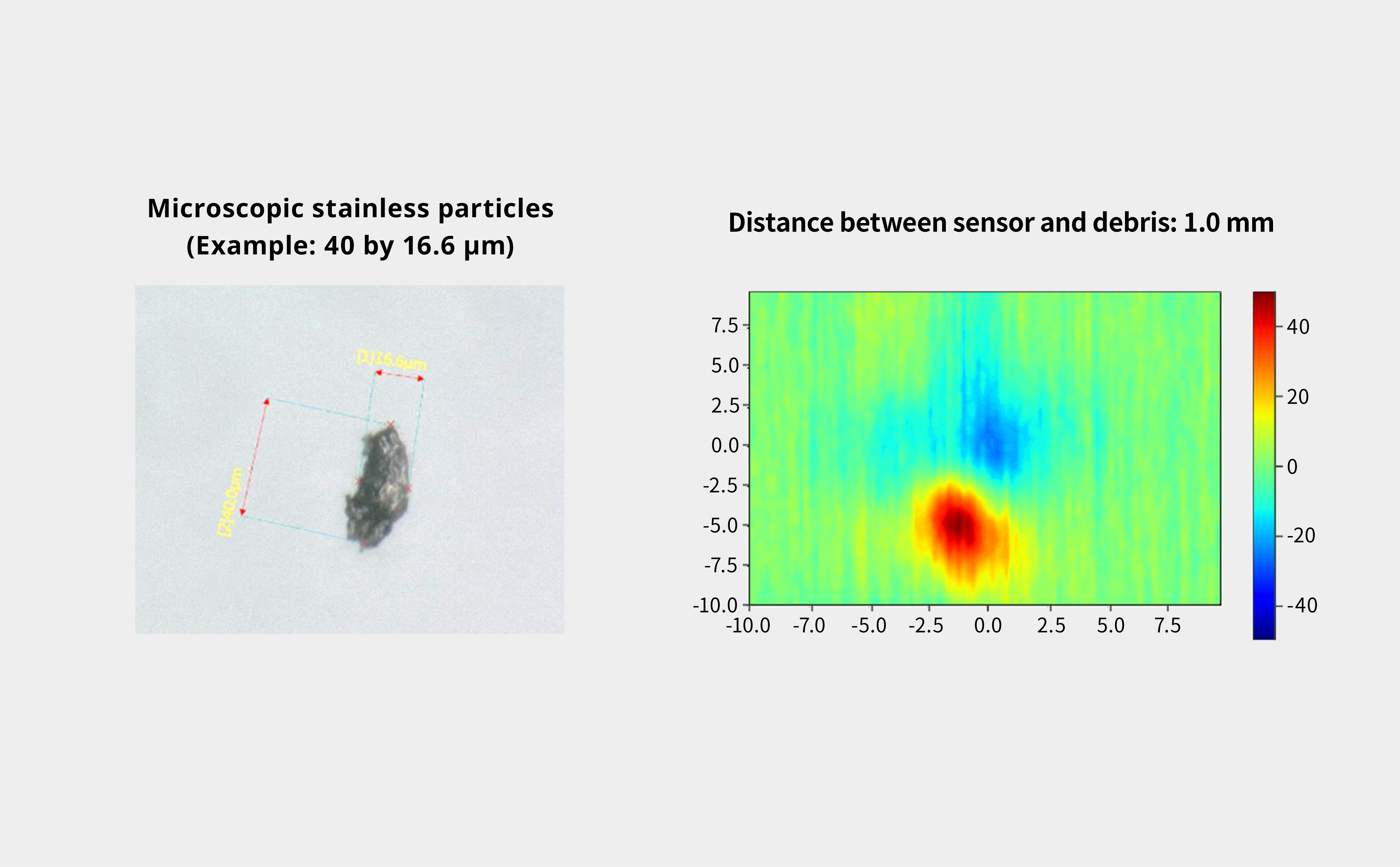Detecting metal particle contamination invisible to the human eye
Implementing stringent quality control procedures in any manufacturing facility is essential, from the raw materials stage onward. The pharmaceutical, cosmetic, industrial and food and beverage industries, in particular, pay close attention to the intrusion of contaminants – even those too small to be visible to the human eye. For instance, a minute impurity in the lithium-ion battery of a smartphone might result in capacity loss, heat generation, or even cause a fire.
There are three functional components to a successful risk management strategy for foreign object contamination – prevention, detection, and investigation. Of these three components, prevention is the most important. It is critical that suppliers have steps in place to eliminate the risk of foreign objects. Also, consider how the raw materials are transported through the supply chain and their storage and movement on site.
Non-magnetic metals like copper and aluminium are malleable; as such, they tend not to break down into fine particles. Particle contamination can, therefore, be avoided by improving the cleanliness of the factory. On the other hand, iron and stainless steel are challenging to get rid of because they are used in production equipment, and their utilisation invariably produces fine particles due to wear and peeling.
There are several methods for detecting foreign object contamination. They are categorised according to their underlying principles, as indicated in Figure 1.

Figure 1: Common methods employed to detect foreign objects
With improvements in image processing and the use of AI, inspection, using cameras and image sensors, is becoming increasingly sophisticated. However, optical inspection is only capable of identifying particles that are present on surfaces. Finding objects within the product can be performed with ultrasonic inspection, although resolutions are typically measured in millimetres, which is insufficient for identifying tiny particles.
The magneto-optical Kerr effect (MOKE) occurs when polarised light encounters a magnetic material. MOKE inspection probes can only look at the surface of the product. They also have a narrow field of view, so the foreign material may not be detected if surface irregularities exist.
Inspection devices such as atomic force microscopes (AFMs) and magnetic force microscopes (MFMs) have a high spatial resolution in the order of tens to hundreds of nanometres. The scanning range is limited, however, and sensor sensitivity is low, and, as a result, they are not suitable for use for inspection on the production line, more for research purposes.
Today, X-ray technology is frequently utilised to find small foreign objects, see Figure 2. The product is exposed to X-rays on the production line, and a line sensor detects any abnormality, both on the product’s surface and internally, based on the amount of X-ray transmission. The great advantage of using X-ray inspection machines is that they can readily detect metallic and non-metallic materials, like glass, rubber, and plastics. However, their sensitivity for detecting metallic objects is limited to a few tenths of a millimetre in size, which is insufficient for tiny fragments and powder.

Figure 2: X-ray inspection machines can detect both magnetic and non-magnetic materials
A standard method for finding metallic contaminants on a manufacturing production line is to use a strong magnet to magnetise them, see Figure 3. Metal sensors then pick up the magnetism released by the particles. Metallic particle detectors with typical magnetic sensors are available on the market, but their detection sensitivity is insufficient for finding metallic powders. Superconducting quantum interference device (SQUID) sensors have ultra-high sensitivity. However, to maintain the superconducting condition within the sensor, they require liquid helium cooling, which causes the equipment to be large and unsuitable for the production line.

Figure 3: How to detect metallic fragments on the production line
To address this need, TDK developed a small magnetic sensor to detect particles smaller than 0.1 mm. The Migne xMR sensor is based on TDK's previous generation Nivio magnetic sensor and utilises capabilities the business has accumulated in producing hard disk drive heads. Its size is only 8 x 8 x 5mm, making it small and thin enough to sit on a fingertip, and, compared to Nivio, it has a better signal-to-noise ratio (SNR) in micromagnetic fields, see Figure 4.

Figure 4: TDK’s Migne xMR sensor is so tiny that it can sit on a fingertip
The magnetised metallic particles become tiny magnets with N and S poles. When scanned using the Migne xMR sensor, the red areas indicate the repelling direction of the particle’s magnetic field lines, and blue indicates the attracting direction, making it detectable, see Figure 5.

Figure 5: Scan of a magnetised iron particle using the Migne xMR sensor
When detecting very weak magnetic fields, the SNR of the sensor is important, especially when looking for stainless steel particles that a more difficult to detect than iron – the higher the SNR of the sensor, the less the signal is concealed by magnetic noise. Figure 6 shows a magnetised stainless steel powder particle sample (40 ×16.6 µm in size) and an image showing its magnetic field strength using the Migne xMR sensor.

Figure 6: The Migne xMR sensor can detect the magnetic field strength of a stainless steel power particle
By arranging the Migne xMR sensors into an array, they can detect foreign objects over a wider area. Where sophisticated inspection for foreign objects is required, such as in the pharmaceutical and chemical industries, this technique can work in tandem with X-ray inspection systems and resolve the size detection limitation for finding tiny iron and stainless steel fragments. This method can also be used to reduce the risk of contamination by tiny metallic particles in electrode materials and separators for Li-ion batteries and fuel cells and many other products, increasing product safety, reliability, and lifespan.
Additional uses besides manufacturing
The Migne xMR performs well in other applications requiring the detection of micromagnetic fields, not just foreign object inspection. These include prospective uses in non-destructive testing to ensure product integrity and reliability and magnetic particle imaging in the medical field. The high-precision xMR sensors hold great potential for the future.



